Search Results for: vertigo
Vertigo (1958)

There’s a reason Alfred Hitchcock is history’s most respected director among both the critics and the public. It’s because his career epitomizes the essence of this site. The rotund man nimbly walked the tightrope between the academic and the mainstream better than anyone — while so many others looked down and got the spins. He was both a showman and a visionary, making films that celebrate the nail-biting entertainment we love about the movies, yet ones that, upon closer inspection, reveal a deeper understanding of how cinesthetic techniques work wonders on the subconscious. That’s the mark of a true genius.
Now that the dust has settled from all the masterworks — from Psycho to The Birds, Rear Window to Notorious — Hitchcock’s cream has finally risen to the top. When Universal released its “Hitchcock Masterpiece DVD Collection,” Vertigo was the only film to feature the word “Masterpiece” on the cover. When the AFI updated its Top 100 list in 2007, Vertigo leaped 52 spots ahead to No. 9. And when Sight & Sound conducted its latest international critics poll in 2012, Vertigo finally ended Citizen Kane’s 50-year reign as the greatest film of all time. Continue reading
Anatomy of a Murder (1959)
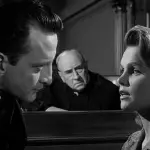
The courtroom is a cinematic goldmine for its many dramatic elements. The high stakes of someone’s life on the line. The terminated life of someone else requiring proper justice. The sleepless nights and legal research that both sides have to dig through to prepare their case. The endless supply of surprise witnesses giving unpredictable testimony. The examination and cross-examination of these witnesses. The battles and objections between prosecution and defense. The rulings and overrulings of judges. The unpredictability of the jurors. And the final climatic reading of the verdict. It’s all real and perfect for the movies.
In most cases, these elements file into a one-sided construct, placing audiences in favor of one particular side (either defense or prosecution) and allowing the drama to unfold as a function of the case. This tried-and-true approach has worked brilliantly from Inherit the Wind to A Few Good Men to Philadelphia. But there’s also something to be said for a film like Anatomy of a Murder, which baits viewers into believing it’s a standard courtroom drama, only to reveal itself as something much deeper with no easy answers. Even after the verdict has been read and the characters have happily moved on with their lives, viewers are left wondering whether their initial sympathies were correct, and more importantly, whether justice was actually served. Continue reading
Jaws (1975)

Call it the scariest horror flick ever made, a Moby Dick action adventure, a social commentary on beach towns and greedy mayors, a humanistic family story of science and wonder, one of the best film adaptations of a best-selling novel, one of the pioneering summer blockbusters and the winner of three Academy Awards (editing, sound, score). Or, if you’re GQ magazine, you can take a more cynical approach and call it the beginning of the end for the Hollywood Renaissance: “It’s now a movie-history commonplace that the late-’60s-to-mid-’70s creative resurgence of American moviemaking — the Coppola-Altman-Penn-Nichols-Bogdanovich-Ashby decade — was cut short by two movies, Jaws in 1975 and Star Wars in 1977, that lit the fuse for the summer-blockbuster era.”
Still, just because many of their starry-eyed followers went on to make effects-heavy garbage for short-attention spans, doesn’t mean that Spielberg and Lucas themselves made garbage. Young Spielberg (Jaws) and Young Lucas (American Graffiti) understood film history — which is more than many of their fanboys can say — with references to John Ford’s The Searchers (1956) in both Close Encounters and Star Wars, before teaming on Raiders of the Lost Ark (1981). Scholar David Thomson put it best: “Like Coppola on The Godfather, Spielberg asserted his own role and deftly organized the elements of a rollercoaster entertainment without sacrificing inner meanings.”
This, my friends, is the essence of The Film Spectrum, a website that urges future filmmakers to find that “sweet spot” of riveting first-time experience, yet increasing depth on repeat viewings. If you won’t take it from me, take it from Billy Wilder: “When people try to belittle The Exorcist or Jaws, I just think these people are crazy. Mr. Spielberg knows exactly what he did, and he did it brilliantly.” And so, let’s all come to grips with a simple fact: Jaws is not only massive entertainment, it remains one of the best directed movies ever made. If you look at our website’s banner in this context, there are fins to the left, fins to the right, and it’s the only shark in town. Continue reading
High Noon (1952)
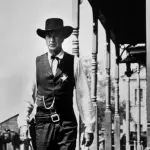
What’s in a name? Better yet, what’s in a song? The title and title song of “High Noon” tell us everything we need to know about Fred Zinnemann’s western masterpiece. Just 13 percent of American feature films used a “title song” between 1950-1954, but the number grew to 22 percent over the next five years, and reached 29 percent by the late ’60s. Sparking the trend was “The Ballad of High Noon,” an Oscar-winning song written by Dimitri Tiomkin and Ned Washington and sung by Tex Ritter (father of John Ritter). Not only would it become a popular country music record, it also allowed the film to both introduce the stakes of its plot and reinforce the moral of its story:
Do not forsake me O my darlin’ / On this our wedding day / Do not forsake me O my darlin’ / Wait, wait along. / The noon-day train will bring Frank Miller. / If I’m a man I must be brave / And I must face that deadly killer / Or lie a coward, a craven coward / Or lie a coward in my grave. / O to be torn ‘twixt love and duty! / Supposin’ I lose my fair-haired beauty! / Look at that big hand move along / Nearin’ high noon. / He made a vow while in State’s Prison / Vow’d it would be my life or his and / I’m not afraid of death, but O, / What will I do if you leave me? Continue reading
Double Indemnity (1944)

“I killed him for money and for a woman. I didn’t get the money, and I didn’t get the woman.” Never has a line better summed up its genre than Fred MacMurray’s classic film noir confession in Double Indemnity. The money is a $100,000 equity on an accident insurance policy. The woman is Barbara Stanwyck’s beautifully rotten Phyllis Dietrichson, the best example of a femme fatale that’s ever hit the screen.
Together, these elements of greed and lust fuel a complex murder scheme that fulfills the film’s fatalistic promise: “It’s a one-way trip and the last stop is the cemetery.” Film historian Eddie Muller put it best, “If I had one movie to explain to people what noir is, it’s Double Indemnity.” Continue reading
Sunrise (1927)
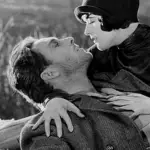
Question: What was the first film to win the Academy Award for Best Picture? Answer: It’s a trick question. During the first year of the Academy Awards (1927-1928), there were actually two Best Pictures. The first, called Best Production, went to William Wellman’s war romance Wings (1927), the film most often credited as the first Oscar-winner. But the second Best Picture category, Most Unique and Artistic Production, went to F.W. Murnau’s Sunrise: A Song of Two Humans in a title as poetic as the cinematic work itself. It was the first and only time such an award was given, so it’s only fitting that it went to Murnau’s “unique and artistic” masterpiece. It remains one of the finest love stories ever told, a watershed moment in direction and visual effects, and the very pinnacle of the silent era, arriving just weeks before The Jazz Singer (1927) ushered in talking pictures.
Based on a novella by German playwright Hermann Sudermann, Sunrise was adapted into a screenplay (or “photo-play” as it was called then) by Australian writer Carl Mayer, who had just finished work on Murnau’s The Last Laugh (1924). It would tell the story of two lovers, the handsome Anses (George O’Brien) and his wholesome blonde wife Indre (Janet Gaynor). Their countryside relationship soon becomes strained by the arrival of a dark-haired temptress from the city (Margaret Livingston), who begins a lakeside affair with Anses and suggests he drown his wife so they can run off together to the city. Continue reading
Letter from an Unknown Woman (1948)

“By the time you read this letter, I may be dead.” So begins Max Ophuls’ masterpiece Letter from an Unknown Woman, instantly gripping audiences, but not by setting up a mystery thriller as some might guess. The letter’s recipient is not some private eye who must keep reading to find clues to a potential murder. Instead, it’s a suave playboy who must keep reading to see how his own selfish actions have led to the heartache of a woman he does not even remember.
This guy is Stefan Brand (Louis Jourdan), a former concert pianist in 1900 Vienna, who has developed a reputation for romancing more women than he can count. The unknown woman, and writer of the letter, is Lisa Berndle (Joan Fontaine), an ailing woman wanting to get a few important things off her chest. Just as intrigued as viewers, Stefan dives into the letter over some coffee and cognac, and the narrative shifts to Lisa’s story, signaled by a blurry flashback and Fontaine’s narration. Continue reading
Vacation (1983) / Christmas Vacation (1989)

Most comedies will never show up on serious critics’ all-time best lists with the likes of Citizen Kane (1941), Vertigo (1958) or 8 1/2 (1963). Yet these same films remain seen, and beloved, by the majority of the population. National Lampoon’s Vacation (1983) and National Lampoon’s Christmas Vacation (1989) are two of those films. Perhaps comedies like this are so over the top that they’re deemed too ridiculous to be considered in a serious assessment of cinema’s greats. After all, there is no way that this many terrible things can occur on one family vacation, or one family Christmas get together.
But those who assess films in this myopic way are missing out on a key ingredient in the cinematic lexicon. You know, “fun.” If a genre film becomes a pop sensation and remains as such over time, some level of recognition is due. Vacation and Christmas Vacation are vulgar riots on their own — boasting the comic genius of Harold Ramis (Groundhog Day) and John Hughes (Ferris Bueller’s Day Off) — while their censored TV versions have played an integral part in the family comedy experience for the last 40 years. As the original 1983 fans have passed their admiration on to their children, it’s become an American right of passage for families to laugh at the ultimate doomed vacationers, the Griswolds, if only because it secretly makes their own dysfunctional family look that much more functional. Continue reading
Raging Bull (1980)

Certain filmographies wouldn’t be the same if not in tandem. Capra and Stewart. Ford and Wayne. Fellini and Mastroianni. Bergman and Von Sydow. And for 22 glorious years, Martin Scorsese and Robert DeNiro. Mean Streets (1973) put them both on the map. Taxi Driver (1976) cemented them as geniuses. And GoodFellas (1990) made them legends. But of all of the Scorsese-De Niro collaborations, Raging Bull is, in the words of Steven Spielberg, “Marty’s masterpiece.” Not only is it the greatest sports biopic ever made, it quite literally saved Scorsese’s life.
In 1973, De Niro read the book Raging Bull: My Story, the autobiography of legendary middleweight boxer Jake LaMotta, while in Sicily playing Young Vito Corleone in The Godfather Part II (1974). (A) How fitting that when Adult Vito later arrived in New York’s Little Italy, he was shot at the fruit market with a sign of LaMotta in the background (talk about divine mise-en-scene). DeNiro immediately suggested the book to Scorsese, who like LaMotta, had seen success in his profession but was now battling personal demons. Not only was he depressed after the flop of New York, New York (1977), starring De Niro, Liza Minnelli and Sinatra’s legendary title song, he was also battling a cocaine addiction that hospitalized him after a near overdose. It was at this very rock bottom that De Niro visited him and insisted that he clean up his life and make Raging Bull. Upon reading the book, Scorsese felt a spiritual connection to LaMotta and decided he would make one last film. Continue reading
GoodFellas (1990)

The gangster picture has undergone quite the transformation in its storied place in American cinema. It was pioneered in the 1910s with Edwin S. Porter’s The Great Train Robbery (1903) and D.W. Griffith’s The Musketeers of Pig Alley (1910). It exploded in the ’30s and early ’40s, as Edward G. Robinson, James Cagney, Paul Muni and Humphrey Bogart played rags-to-riches anti-heroes in Little Caesar (1930), The Public Enemy (1931), Scarface: The Shame of a Nation (1932) and High Sierra (1941). Over the next few decades, the genre turned more violent and sexy with Raoul Walsh’s White Heat (1949), Joseph Lewis’ Gun Crazy (1950) and Arthur Penn’s Bonnie and Clyde (1967). By the ’70s, Francis Ford Coppola elevated it to the high-class opera of family dynasty in The Godfather (1972) and The Godfather Part II (1974). And by the ’80s, Brian De Palma made it both deliciously over-the-top in Scarface (1983) and nostalgically throwback in The Untouchables (1987).
By 1990, you may have thought the genre had been done to death, left lying in the gutter, riddled with bullet holes. But there emerged a film that, for the first time, let us in on the “inside baseball” of the mob, replacing operatic styles with a focus on gritty realism. Martin Scorsese’s Goodfellas was a game changer, less a “gangster picture” and more a “how to be a gangster” picture. Rather than merely show the gangster life, the film narrates the details directly to the viewer, an approach adopted by countless subsequent films, from Scorsese’s own Casino (1995) to Johnny Depp’s Blow (2001), while inspiring arguably the greatest television show of all time in The Sopranos (1999). Continue reading
Taxi Driver (1976)

While Mean Streets (1973), Raging Bull (1980), GoodFellas (1990) and The Departed (2006) all dealt with some form of institutionalized American violence — organized by a community of mobsters and fight bookies — Martin Scrosese used Taxi Driver to explore the opposite: the violence made possible by the lack of community, extreme isolation and a dangerous loneliness. In this case, it’s a 1970s New York City cab driver, a man who gives rides to countless people each night, but who remains utterly alone.
The taxi proved a career vehicle for Robert DeNiro, who was fresh off a Supporting Actor Oscar win for The Godfather Part II (1974), the same year Scorsese directed Ellen Burstyn to her own Oscar for Alice Doesn’t Live Here Anymore (1974) — a follow-up to her lead role in The Exorcist (1973). And so, three years after collaborating on Mean Streets, Scorsese and DeNiro reunited for DeNiro’s most harrowing performance: that of alienated Vietnam veteran Travis Bickle, whose cab meter might as well be a ticking time bomb.
In just four improvised words — “You talkin’ to me?” — DeNiro was an instant legend, inventing a standard phrase in the English language and capturing the feeling of isolation crucial to Scorsese’s film. As Bickle stares into his apartment wall mirror, mumbling to himself and whipping out a newly-purchased handgun, we get a look at just what this character has become — a lonely creature lost in his own mind and in the claustrophobia of his own cramped existence. Are his urban surroundings the root of the problem, or is it the social outcast status offered to many a military vet? One thing is for certain: Bickle is one mentally disturbed individual, and Scorsese’s two-hour investigation into his life is one of the most fascinating, most complex character studies ever done. Continue reading
Breakfast at Tiffany’s (1961)
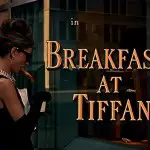
On multiple debate fronts — greatest chick flicks, landmarks in fashion history, Hollywood’s most beloved leading ladies — all discussion must pass through one iconic actress in one equally iconic film: Audrey Hepburn in Breakfast at Tiffany’s. This is the true test of a movie classic, to be deemed important in such a wide array of historical influence. Sure, Breakfast at Tiffany’s delves unashamedly into melodrama and suffers from certain stereotypes and censorship restraints of its time. But the film, drawing from a source novel by Truman Capote, struck a chord in 1961 that hasn’t let up since.
Partial credit must be given to Capote, whose childhood became the Dill character in To Kill a Mockingbird (1962); whose career novel became Richard Brooks’ courtroom drama In Cold Blood (1967); and whose life became an Oscar-winning performance by Philip Seymour Hoffman in Capote (2005). Still, you could argue that Breakfast at Tiffany’s remains his most popular screen adaptation. The rest of the credit belongs to the storied team of Hepburn and costume designer Hubert de Givenchy, who also crafted her outfits in Sabrina (1954), Funny Face (1957), Love in the Afternoon (1957), Paris – When it Sizzles (1964) and culminating in the Best Picture winner My Fair Lady (1964). Continue reading
Timeline
In our age of streaming, the notion of time has been erased. No longer must you wait for a film’s re-release at the theater to watch it again. Now, with the click of a single button, you can watch “Bonnie … Continue reading
Psycho (1960)

If you live long enough, you hope to have that rare experience of sitting in a theater when a movie comes along that changes everything. This may happen once or twice in a lifetime, if you’re lucky. After all, you never know when such a zeitgeist is going to strike. So wouldn’t I give anything to have been sitting there during that initial screening of Psycho. To stand in the long lines outside New York’s Radio City Music Hall, anticipating the new film from Hollywood’s most famous director and one of television’s most famous personalities. To see advertisements of Alfred Hitchcock forbidding us to arrive after the film’s start (a historical first), locking the doors after the projector rolled, and begging us not to share the film’s secret afterwards (a virtual impossibility in today’s internet age).
What I wouldn’t give to have been sitting there, watching one of Hollywood’s sexiest leading ladies, Janet Leigh, derobe and step into that shower. To share in her naivety as to how culturally significant that shower was about to become. To hold my breath as a shadowy figure approached that shower curtain. And to scream as those shower rings ripped open and a knife blade chopped to Bernard Herrmann’s screeching strings! Continue reading
Chinatown (1974)

“In the middle of a drought and the water commissioner drowns! Only in L.A.” Movies don’t get much better, or better written, than Chinatown. Roman Polanski’s masterpiece joined Robert Altman’s The Long Goodbye (1973) in reviving the Hollywood detective story for the next 25 years, bringing films like Who Framed Roger Rabbit? (1988), Dick Tracy (1990), L.A. Confidential (1997) and the Chinatown sequel The Two Jakes (1990).
This “neo noir” trend resurrected a genre that was left for dead after a stretch from 1941-1958, bringing us masterpieces like The Maltese Falcon, Double Indemnity, Laura, The Big Sleep, Out of the Past and Touch of Evil. Back were the the private dicks, femme fatales, venetian blinds and smoky silhouettes, but they were now infused with a modern style reflecting the corruption of the modern age.
If you like happy endings where the good guys triumph and the bad guys get their comeuppance, don’t enter Chinatown. But if you like the hand of fate leading twisted folks to tragic conclusions, Chinatown will snip your nose and wash you away. The film dominated the Golden Globes, winning Best Picture, Actor (Jack Nicholson), Director (Polanski) and Screenplay (Robert Towne), and it would have repeated at the Oscars if it weren’t for The Godfather: Part II (1974). Instead, the film’s only Oscar went to Towne’s script, which peels back its layers like a ripe onion voted the AFI’s No. 2 Mystery of All Time, behind only Vertigo (1958). Continue reading
Singin’ in the Rain (1952)
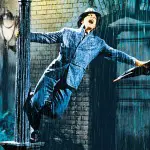
“Now you could study Shakespeare and be quite elite / And you can charm the critics and have nothin’ to eat / Just slip on a banana peel, the world’s at your feet / Make ’em laugh, Make ’em laugh, Make ’em laugh!”
These lyrics prove exactly why Singin’ in the Rain is one of the most revered movies of all time – across both sides of the film spectrum. It at once charms the most elite critics, voted No. 20 all-time on the Sight & Sound critics poll and the AFI’s #1 Greatest Movie Musical of All-Time, while equally entertaining the masses, voted No. 85 on the IMDB Top 250. You don’t know how many times I’ve heard colleagues say, “I can’t stand musicals, but you know, that Singin’ in the Rain is alright.” Imagine what those of us who love musicals think. Continue reading
Repulsion (1965)

You could sense the menace lurking just beneath the surface in his debut film, Knife in the Water (1962). But Roman Polanski would elevate that ominous feeling to all-out horror in his next film, Repulsion, his first in English and his first collaboration with screenwriter Gerard Brach. If you think a $300,000 movie from 1965 can’t disturb the hell out of you, pop this one into the DVD player. It remains every bit the creeper it was back then and serves as a great introduction to the twisted mind of Polanski.
The film kicked off Polanski’s “apartment trilogy” about the dangers of urban dwelling, followed by Rosemary’s Baby (1968) and The Tenant (1976). In many ways, Repulsion is the organic, unpolished version of Rosemary’s Baby, planting the seed for many of its elements: peephole shots, voices through walls, raw meat, rape hallucinations and an unsettling Krzysztof Komeda score. Continue reading
Quiz Show (1994)
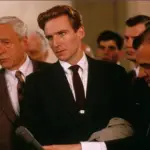
In the wave of stud actors-turned-directors in the ’80s and ’90s, none hit the ball out of the park farther than Robert Redford in Quiz Show. Nominated for four Oscars, including Best Picture, Redford’s depiction of the 1950s quiz show scandals went under the radar in the year of Forrest Gump (1994), Pulp Fiction (1994) and The Shawshank Redemption (1994). But make no mistake about it: Quiz Show could very well be the best fourth-best-movie-of-the-year of all time, right up there with Ninotchka (1939) and All the President’s Men (1976). That is if it’s even fourth best. In many ways, it’s better directed than Pulp, with characters just as strong as Shawshank and with just as good an eye for history as Gump. Above all, it is undoubtedly Redford’s best from the director’s chair, a true forgotten gem of the last 25 years. Continue reading
Snow White and the Seven Dwarfs (1937)

“Walt Disney occupied his own space, both literally and figuratively in Hollywood,” film critic Leonard Maltin said. “I think of him as a visionary, truly a visionary, and I think of him more in a league with Thomas Edison than with Louis B. Mayer.” Indeed, Walt Disney’s legacy has become one of such nostalgia and family entertainment that we often forget just how important he was toward the overall advancement of the film medium. From the beginning, Walt relied on technological advancement as his niche claim to fame, carving a reputation for ambition and ingenuity that would sustain his considerable talents as a storyteller.
His first big break, the silent Alice pictures, played on the gimmick of combining live action with animation, long before Who Framed Roger Rabbit? (1988). His second, Mickey Mouse in Steamboat Willie (1928), marked another technological breakthrough as the first animated cartoon with sound. Always forward looking, Walt continued to push the limits of how he could make his product unique, signing an exclusive contract with Technicolor in 1932, and creating some of the first cartoons in color, from his Silly Symphony shorts, to his massive hit The Three Little Pigs (1933), which had Depression era Americans, young and old, defiantly humming “Who’s Afraid of the Big Bad Wolf?” Continue reading
Notorious (1946)
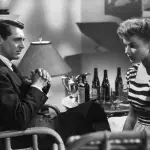
Alfred Hitchcock was the best of the best, a shoe-in for MovieMaker Magazine’s Most Influential Director of All Time. So it’s no wonder that Roger Ebert, in selecting his own All Time Top 10, would include a Hitchcock film. Contrary to what you might expect, it was not Psycho (1960). Nor was it Vertigo (1958), Rear Window (1954), North By Northwest (1959), Frenzy (1972), Rebecca (1940), or The Birds (1963). No, for Ebert it was Notorious, the very same film that Turner Classic Movies host Robert Osbourne calls his favorite Hitchcock.
What is it about the magic of this film? Is it because it’s the first time Hitch realized the benefit of major stars, bringing us the Oscar-nominated support of Claude Rains and the dream pairing of Cary Grant and Ingrid Bergman? Is it because it’s the first time Hitch discovered the benefit of great dialogue, thanks to an Oscar-nominated script by Ben Hecht? Or is it because it marks the moment Hitchcock began financing his own pictures for the rest of his career? I say it’s all these at once, a perfect storm for Hitchcock’s first major masterpiece, building off his work in The 39 Steps (1939), Rebecca (1940) and his personal favorite, Shadow of a Doubt (1942), to assemble his first major flourish of auteur iconography (those elements which we recognize as undeniably Hitchcock). Continue reading
Crimes and Misdemeanors (1989)

Throughout history, the very greatest filmmakers, each of a different niche, always seem to attempt at least one master tragedy. For Alfred Hitchcock, it was Vertigo (1958). For Orson Welles, it was Citizen Kane (1941). And for Woody Allen, it was the unique Crimes and Misdemeanors. The film is tragedy in the real sense of the word, not its common use to describe a disaster or catastrophe. This is tragedy like the Greeks meant it, where a character has a choice between impulse (what he wants to do) and imperative (what he should do), and after that choice, realizes that all suffering caused is his own doing. And in each case, the tragedy provides the most frutiful ground for the filmmaker’s deepest dive into his own subconscious.
The fact that Allen is a far more comedic filmmaker than either of the aforementioned directors only adds to the mystique of Crimes and Misdemeanors. The film remains a comedy of manners in the truest Allen form, featuring themes consistent to his career, several afflicted relationships and a number of trademark one-liners — Cliff’s Statue of Liberty joke, or his sister describing a disgustingly-kinky encounter. But beneath the laughs lies Allen’s darkest movie, and also his deepest. If by the auteur theory, one can follow a filmmaker’s career with an almost narrative arc, Crimes and Misdemeanors would be Allen’s crescendo, achieving the height of his expression of his deepest concerns — the uncertain nature of relationships, the mind-body complex and its ability to warp morals, and the somewhat answerless quest for the meaning of life. Continue reading
Persona (1966)

“Don’t you think I understand? The hopeless dream of being. Not seeming, but being. In every waking moment aware, alert. The tug of war — what you are with others and who you really are. A feeling of vertigo and a constant hunger to finally be exposed. To be seen through, cut down, even obliterated.”
Such is said of the protagonist in Ingmar Bergman’s Persona, yet it may also be said of the film itself. For while Bergman had been considered a “serious” filmmaker since his pair of 1957 classics The Seventh Seal and Wild Strawberries, those films were still entirely accessible. Allegorical, yes, but still fairly tidy.
It wasn’t until Persona that Bergman fully satisfied the “hunger to be exposed.” That is, to expose cinema in a self-reflexive way. He saw through it, cut it down, obliterated it. And as Bergman himself wrote in his book Images, “Today I feel that in Persona — and later in Cries and Whispers – I had gone as far as I could go. And that in these two instances when working in total freedom, I touched wordless secrets that only the cinema can discover.” Continue reading
Laura (1944)
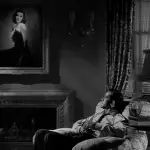
If you’re a fan of film noir, you should get down on your knees and thank God every day for 1944. The year produced three staples of this most atmospheric of film styles — Billy Wilder’s “Double Indemnity” from a novel by James M. Cain, Edward Dmytryk’s “Murder, My Sweet (Farewell My Lovely)” from a novel by Raymond Chandler, and, of course, Otto Preminger’s haunting whodunit “Laura,” from a novel by Vera Caspary. Of the three, “Double Indemnity” clearly takes the title of “Best Noir of ‘44.” But Preminger’s “Laura” at least gives it a run for its murder-mystery money.
Voted the No. 4 Greatest Mystery of All Time by the AFI, “Laura” features all the classic elements of both the mystery genre and the noir style: shadows, mirrors, a murder investigation, a string of suspects insisting they’re innocence, competing hearts, muddled morality, the looming threat of a femme fatale and a smoking detective who lives by the motto: “Dames are always pulling a switch on you.” Continue reading
A Place in the Sun (1951)

I was 20 when I fell for Elizabeth Taylor. It was during one of my first internships at The Baltimore Sun, when we heard the actress was on her death bed. Film critic Michael Sragow and multimedia editor Jo Parker had me compile a tribute video, filled with the cheesy transitions of a first-time editor. Thus my first explorations of classic Hollywood came with my first explorations of Taylor. I was a sucker for those breathless lines and purple eyes, and I quickly realized there was so much more to Taylor than the diamonds and celebrity home-wrecking I’d heard about.
She wound up living for six more years, and it became a running joke at The Sun that my montage was still sitting on the shelf. By the time it finally ran in 2011, giving her “A Place in the (Baltimore) Sun,” I had hoped the day would never come. I had grown totally endeared to her work, such that her passing recalled her teary-eyed farewell to Monty Clift: “It seems like we always spend the best part of our time, just saying goodbye.” Continue reading
Blue Velvet (1986)

In the 2002 Sight & Sound critics poll, David Thomson voted Blue Velvet not just his favorite movie of the ’80s, but his favorite film of all time. Thomson sang the highest of praises, saying, “It would be as hard to advance on Blue Velvet as it must have been to work after Citizen Kane.” (A) That sentiment was echoed by Peter Travers, who called Blue Velvet a “perverse masterwork” and ranked it #9 in Rolling Stone‘s 100 Maverick Movies.
Why, then, is there a backlash from mainstream viewers, who gave higher box office receipts to 76 other movies that year? Why does the public rate it a 7.8 on IMDB? Why did Roger Ebert give it just one star in 1986? And why does it still only get two stars on my Comcast cable box, compared to the 92% rating on rottentomatoes?
The answer: Blue Velvet is not only odd, but it goes for something that transcends cinema. As a first-time viewer, you share in the main character’s uncomfortable departure from your safe movie-going existence. You go along with it, because you’re intrigued, but by the time the velvet curtain drops, you aren’t sure what to make of it. Wasn’t half the movie campy, corny, even poorly written? And how does that compute with the other half, which is the exact opposite — a brutally real underworld? Finally, you contemplate it long enough and you realize the corniness and brutality are both there for a reason: two contrasting views on the world around us, presented in two contrasting styles by a director daring enough to challenge us and to comment on the film medium itself. Continue reading
Eternal Sunshine of the Spotless Mind (2004)

How brilliant a writer is Charlie Kaufman? Brilliant enough to earn three Oscar nominations and contribute three scripts to the Writers Guilds’ 101 Greatest Screenplays of All-Time — all in a span of six years. From 1999-2004, Kaufman single-handedly gave us some of the most imaginative screenplays in the history of movies, from Being John Malkovich (1999), about a puppeteer finding a hidden doorway into the head of actor John Malkovich, to Adaptation. (2002), about twin-brother screenwriters.
Yet as good as those scripts are — and they are phenomenal — Kaufman’s most inventive and touching work has to be Eternal Sunshine of the Spotless Mind, a film about ex-lovers who undergo a procedure to erase eachother from their respective memories. If only Jimmy Stewart had that luxury in Vertigo. And yet, Eternal Sunshine is so much more than its original, bittersweet premise. Kaufman layers his gimmick with deep characterization, beautiful themes and wondrous science fiction. Of the three aformentioned scripts to land on the WGA list, Eternal Sunshine ranks the highest at #24, and while the other two did not win Kaufman Oscars, Eternal Sunshine finally did the trick. Continue reading
Rear Window (1954)
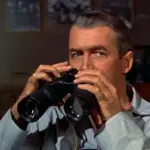
By the late ’40s, Alfred Hitchcock had made roughly 40 films, and like many great artists, he had become restless in his work. Yearning to stretch the boundaries of a medium he had so clearly mastered, he began what some would call his “experimental phase,” a creative flourish that produced Rope (1948), a film shot in ten long “single takes” to create the illusion of one continuous shot; Dial M for Murder (1954), which dabbled in a 3D technology that allowed Grace Kelly to lift a pair of scissors off the screen; even The Man Who Knew Too Much (1955), where he inserted a Doris Day musical number.
The greatest in this experimental period was, of course, Rear Window. Here, Hitchcock concocted his most original, most challenging concept yet: to create an entire film from one vantage point, the rear window of a Greenwich Village apartment, and in turn, symbolize the very movie-watching experience and director-viewer relationship that made him a legend. Continue reading
Citizen Kane (1941)

“[‘Citizen Kane’] may be more fun than any other great movie,” wrote Pauline Kael, godmother of all film critics. I have a hunch, however, that your average viewer will agree more with Peter Griffin of “Family Guy:” “It’s a sled. There, I just saved you two long, boobless hours.” Indeed, so many in the mainstream reflect Joey and Rachel in “Friends:” “Have you ever tried to sit through ‘Citizen Kane?'” “I know. It’s really boring, but it’s like a big deal.”
Trust me. “Citizen Kane” is the single most important film for you to understand, because it carries the very DNA required of every film critic, the blueprint for any serious filmmaker and the standard by which scholars judge the “great movies.” Understand this one, and you’ll have unlocked the most challenging end of the film spectrum. You’ll be well on your way to understanding the rest of the listology kings, the art masterpieces and the critical favorites that have mystified you for so long. Continue reading
AFI Top 25 Movie Scores
1 Star Wars 1977 20th Century Fox, Lucasfilm John Williams 2 Gone with the Wind 1939 Selznick International Max Steiner 3 Lawrence of Arabia 1962 Columbia Maurice Jarre 4 Psycho 1960 Paramount Bernard Herrmann 5 The Godfather 1972 Paramount Nino Rota … Continue reading
AFI 100 Passions
1 Casablanca 1942 2 Gone with the Wind 1939 3 West Side Story 1961 4 Roman Holiday 1953 5 An Affair to Remember 1957 6 The Way We Were 1973 7 Doctor Zhivago 1965 8 It’s a Wonderful Life 1946 … Continue reading
AFI 10 Top 10
Animation # Film Year 1 Snow White and the Seven Dwarfs 1937 2 Pinocchio 1940 3 Bambi 1942 4 The Lion King 1994 5 Fantasia 1940 6 Toy Story 1995 7 Beauty and the Beast 1991 8 Shrek 2001 9 … Continue reading
AFI 100 Thrills
1. Psycho 1960 2. Jaws 1975 3. The Exorcist 1973 4. North by Northwest 1959 5. The Silence of the Lambs 1991 6. Alien 1979 7. The Birds 1963 8. The French Connection 1971 9. Rosemary’s Baby 1968 10. Raiders … Continue reading
AMC Filmsite Top 300
(alphabetical) Pre-20’s: The Birth Of A Nation (1915) Intolerance (1916) Broken Blossoms (1919) The 1920’s: The Kid (1921) Greed (1924) Sherlock, Jr. (1924) The Thief of Bagdad (1924) The Big Parade (1925) The Freshman (1925) The Gold Rush (1925) The … Continue reading
IMDB Top 250
1. 9.2 The Shawshank Redemption (1994) 650,716 2. 9.2 The Godfather (1972) 493,197 3. 9.0 The Godfather: Part II (1974) 304,896 4. 8.9 The Good, the Bad and the Ugly (1966) 204,658 5. 8.9 Pulp Fiction (1994) 512,848 6. 8.9 … Continue reading
Village Voice Top 100
(Best of the 20th Century) 1. Citizen Kane (1941) 2. The Rules Of The Game (1939) 3. Vertigo (1958) 4. The Searchers (1956) 5. The Man With A Movie Camera (1929) 6. Sunrise (1927) 7. L’ Atalante (1934) 8. The … Continue reading
Rolling Stone 100 Maverick Movies
(By Rolling Stone critic Peter Travers) 1. The Godfather Trilogy (1972-1990), Francis Ford Coppola “The flawed Part III barely slides in on goodwill. No matter. This is entertainment raised to the level of art: an offer you can’t refuse. Coppola … Continue reading
TV Guide Top 50
1. The Godfather: Part II (1974) 2. Casablanca (1942) 3. Citizen Kane (1941) 4. The Wizard Of Oz (1939) 5. To Kill A Mockingbird (1962) 6. Singin’ In The Rain (1952) 7. The Godfather (1972) 8. Psycho (1960) 9. Chinatown … Continue reading
Entertainment Weekly Top 100
1. The Godfather (1972) 2. Citizen Kane (1941) 3. Casablanca (1942) 4. Chinatown (1974) 5. Raging Bull (1980) 6. La Dolce Vita (The Sweet Life) (1960) (It.) 7. The Godfather, Part II (1974) 8. Gone With The Wind (1939) 9. … Continue reading
Sight & Sound Critics Poll
2002 poll of international film critics 1. Citizen Kane (Welles) 2. Vertigo (Hitchcock) 3. La Régle du jeu (Renoir) 4. The Godfather / The Godfather Part II (Coppola) 5. Tokyo Story (Ozu) 6. 2001: A Space Odyssey (Kubrick) 7. Battleship … Continue reading
Fraley Film Guide
When film historian David Thomson published the 2003 edition of his New Biographical Dictionary of Film, he lamented his distaste in the direction of the film industry and ultimately decided: “Maybe this kind of book needs young authors to take up … Continue reading
AFI Top 100 (10th Anniversary Edition)
1. Citizen Kane (1941) 2. The Godfather (1972) 3. Casablanca (1942) 4. Raging Bull (1980) 5. Singin’ in the Rain (1952) 6. Gone with the Wind (1939) 7. Lawrence of Arabia (1962) 8. Schindler’s List (1993) 9. Vertigo (1958) 10. … Continue reading
Masterpieces
In order to be considered a masterpiece, a film has to have been out for at least five years and I must have seen it more than once. This not only allows enough time for an in-depth analysis, but also … Continue reading
